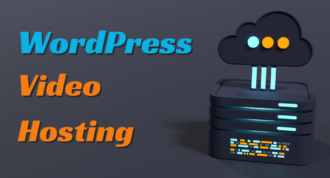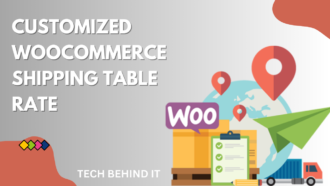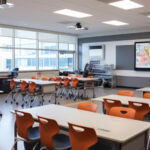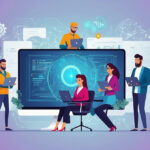How to set up WordPress in a Headless Manner
- 1 Advantages of WordPress:
- 1.1 1. User-Friendly:
- 1.2 2. Extensive Theme and Plugin Ecosystem:
- 1.3 3. Scalability:
- 1.4 4. Community Support:
- 1.5 5. SEO-Friendly:
- 1.6 6. Mobile Responsiveness:
- 1.7 7. Content Management:
- 1.8 8. Regular Updates and Security:
- 1.9 9. Multimedia Support:
- 1.10 10. E-commerce Capabilities:
- 1.11 11. Community and Documentation:
- 1.12 12. Integration Possibilities:
- 1.13 13. Cost-Effective:
- 1.14 14. Customization Options:
- 1.15 15. Media Management:
- 2 Setting Up WordPress:
- 2.1 Step 1: Choose a Domain Name and Hosting Provider
- 2.2 Step 2: Install WordPress
- 2.3 Step 3: Configure Basic Settings
- 2.4 Step 4: Choose a Theme
- 2.5 Step 5: Install Essential Plugins
- 2.6 Step 6: Create Essential Pages
- 2.7 Step 7: Set Permalinks
- 2.8 Step 8: Secure Your Website
- 3 Headless WordPress Approach
- 4 Conclusion
WordPress being the market leader came forward with a new approach and worked on delivering the standard through improved technology. Use the WordPress dashboard for rich content editing, while migrating the front-end architecture to the JAMstack to profit from better security, performance, and reliability. One of the foremost interesting features of WordPress is that it includes an API right out of the box.
Building a WordPress theme in PHP was once the sole thanks to develop an interface for a WordPress-powered site, the remainder of API ushered during a new era where the content management powers of WordPress might be extended to be used outside the basic WordPress directory on a server, whether that be an app, a hand-coded site, or maybe different platforms altogether.
Advantages of WordPress:

1. User-Friendly:
Intuitive Interface: WordPress has a user-friendly and intuitive interface, making it easy for beginners to create and manage content without a steep learning curve.
WYSIWYG Editor: The What You See Is What You Get (WYSIWYG) editor allows users to format text, add media, and create content visually without the need for coding skills.
2. Extensive Theme and Plugin Ecosystem:
Themes: A vast collection of free and premium themes allows users to change the design and appearance of their websites easily.
Plugins: A rich ecosystem of plugins provides additional functionality. Whether it’s SEO optimization, e-commerce capabilities, or security features, there’s likely a plugin available.
3. Scalability:
WordPress is scalable and can handle websites of all sizes. It’s suitable for small personal blogs as well as large enterprise websites.
4. Community Support:
A large and active community of users and developers contributes to the WordPress ecosystem. Users can find support through forums, tutorials, and online communities.
5. SEO-Friendly:
WordPress is inherently SEO-friendly, with features like customizable permalinks, easy content creation, and the ability to integrate SEO plugins like Yoast SEO for further optimization.
6. Mobile Responsiveness:
Most WordPress themes are designed to be mobile-responsive, ensuring that websites look and function well on various devices, including smartphones and tablets.
7. Content Management:
WordPress excels as a content management system, allowing users to easily organize and manage content through categories, tags, and hierarchical structures.
8. Regular Updates and Security:
The WordPress core, themes, and plugins receive regular updates, enhancing features, fixing bugs, and addressing security vulnerabilities.
9. Multimedia Support:
WordPress supports various multimedia types, including images, videos, and audio files. Users can embed media easily into their content.
10. E-commerce Capabilities:
With plugins like WooCommerce, WordPress can be transformed into a fully functional e-commerce platform, allowing users to set up online stores with ease.
11. Community and Documentation:
WordPress has extensive documentation that helps users understand the platform better. The community actively contributes to forums and discussions, providing valuable insights and assistance.
12. Integration Possibilities:
It can seamlessly integrate with various third-party services, APIs, and applications, enhancing its functionality and providing users with more options.
13. Cost-Effective:
WordPress is open-source, which means it is free to use. Users can create powerful and feature-rich websites without incurring significant initial costs.
14. Customization Options:
Users have a high degree of control over the appearance and functionality of their websites. Customization options extend beyond themes and plugins, allowing for tailor-made solutions.
15. Media Management:
WordPress comes with a built-in media library, making it easy to upload, manage, and organize media files.
Setting Up WordPress:
Setting up WordPress involves a series of steps, from choosing a hosting provider to installing and configuring the platform. Here’s a detailed guide to help you set up WordPress:
Step 1: Choose a Domain Name and Hosting Provider
- Domain Name: Choose a unique and memorable domain name for your website. You can use domain registrars like Namecheap, GoDaddy, or Google Domains to purchase a domain.
- Hosting Provider: Choose a reliable hosting provider. Some popular options include Bluehost, SiteGround, and HostGator. Compare their plans, features, and customer reviews to make an informed decision.
Step 2: Install WordPress
- One-Click Install (CPanel): Many hosting providers offer one-click installations for WordPress. Log in to your hosting account, navigate to the cPanel, and look for an option like “Softaculous” or “Installatron.” Follow the on-screen instructions to install WordPress.
- Manual Installation: If your hosting provider doesn’t have a one-click installer, you can install WordPress manually:
- Download the latest version of WordPress from wordpress.org.
- Upload the WordPress files to your web server using an FTP client.
- Create a MySQL database and user through your hosting control panel.
- Edit the
wp-config.phpfile with your database information. - Run the WordPress installation script by accessing your website URL.
Step 3: Configure Basic Settings
- Login to WordPress: Once the installation is complete, log in to your WordPress dashboard using the URL
http://yourdomain.com/wp-admin/. - General Settings: Navigate to “Settings” > “General” and set your site title, tagline, and other basic settings.
Step 4: Choose a Theme
- Install a Theme: Go to “Appearance” > “Themes” and click on “Add New” to browse and install a theme. You can also upload a theme if you’ve purchased one.
- Customize Your Theme: Customize the appearance of your site by going to “Appearance” > “Customize.” Here, you can modify colours, fonts, and other theme-specific settings.
Step 5: Install Essential Plugins
- Add Plugins: Explore the “Plugins” section to enhance the functionality of your site. Some essential plugins include:
- Yoast SEO: for search engine optimization.
- W3 Total Cache: for performance optimization.
- Akismet: for spam protection.
- Install and Activate: Click on “Plugins” > “Add New,” search for the desired plugin, and click “Install Now.” After installation, activate the plugin.
Step 6: Create Essential Pages
- Add Pages: Create essential pages like “Home,” “About Us,” “Contact Us,” and a blog page. Go to “Pages” > “Add New” to create new pages.
Step 7: Set Permalinks
- Permalink Settings: Go to “Settings” > “Permalinks” and choose a URL structure. “Post name” is a common and SEO-friendly option.
Step 8: Secure Your Website
- Update Regularly: Keep WordPress, themes, and plugins updated to ensure security.
- Install a Security Plugin: Consider using a security plugin like Wordfence or Sucuri to enhance your site’s security.
Congratulations! Your WordPress website is now set up and ready to go. Don’t forget to regularly back up your website and keep everything up-to-date for optimal performance and security.
Headless WordPress Approach
We’re not tethered to PHP. This model of development is called a Headless CMS. It’s worth mentioning that Drupal and most other popular content management systems out there also offer a headless model, so tons of what we show during this article isn’t just specific to WordPress.
WordPress is employed purely for its content management interface (the WordPress admin) and therefore the data entered into it is syndicated anywhere that requests the info via the API. It means your standard site content can now be developed as a static site, progressive web app, or the other way while continuing the utilization of WordPress because of the engine for creating content.
Conclusion
In a nutshell, a headless CM may be thanks to decoupling traditional front- and back-end interfaces, to make content that isn’t tethered to a selected platform. Although it wasn’t originally designed for that purpose, WordPress can now be used as a headless CMS.
That’s very true if you’ve got a knowledgeable coder on your team. Headless WordPress Development has many new advantages. These include G+ flexible stack integration, which makes it easy to Publish, Edit, and Review content to multiple channels, and faster page loading times, which improves your site’s user experience. Implementing headless WordPress is often a sticky touch of a project, but you’ll start by learning the ins and outs of React JS. Alternately, you’ll enjoy improved speed and customization via the Divi Builder, without the necessity for any coding skills.

















